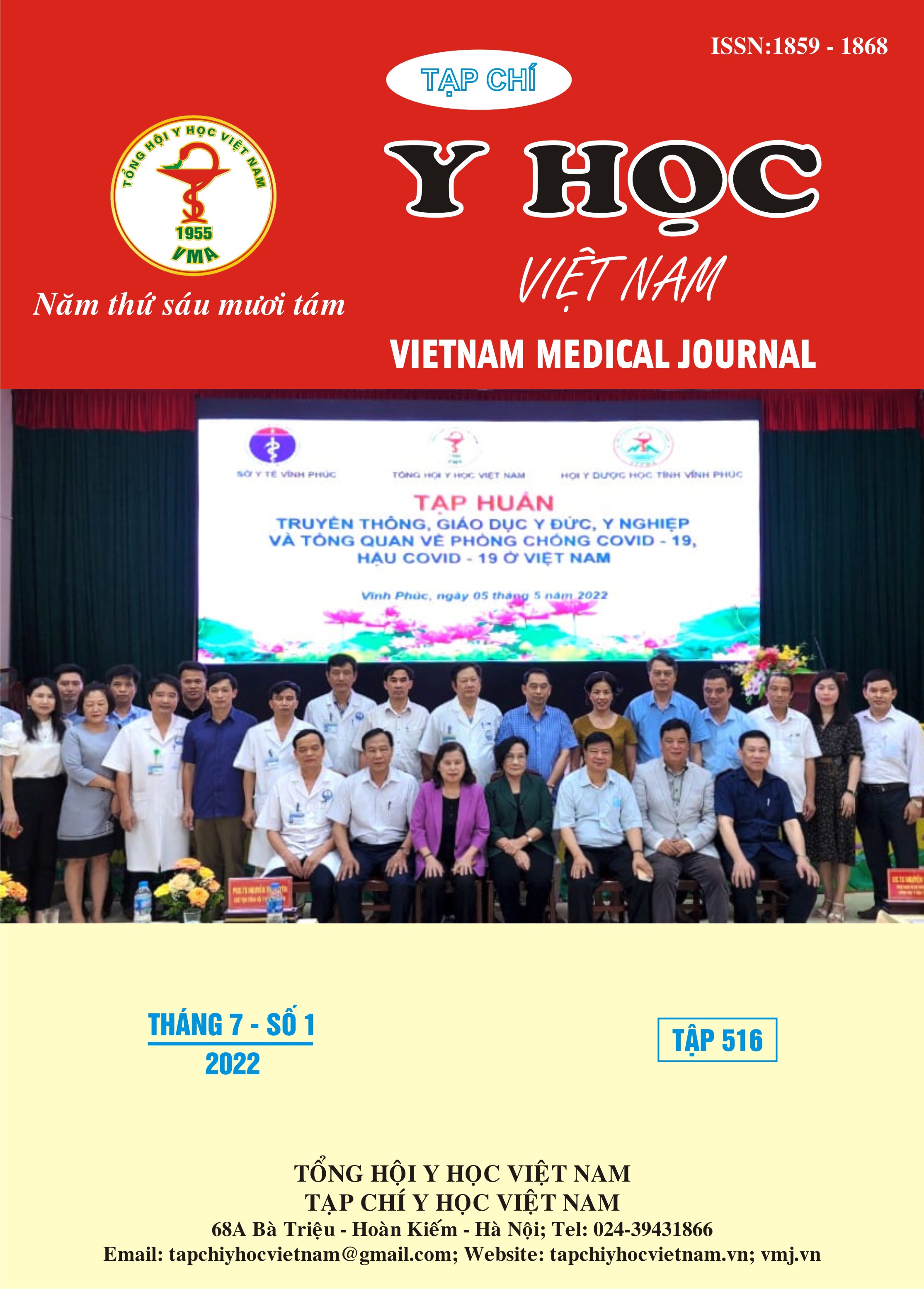SURVEY ON TRADITIONAL MEDICINE AND MODERN MEDICINE IN TREATING OSTEOPORORIS IN THE GERIATRIC DEPARTMENT OF NATIONAL HOSPITAL OF TRADITIONAL MEDICINE
Main Article Content
Abstract
Objective: The study was performed to investigate methods of traditional medicine and modern medicine in treating Osteopororis in the Geriatric Department of National hospital of Traditional medicine. Subjects and Method: prospective method, cross-sectional descriptive study on 72 patients with a convenience sampling method, execution time from 6/2019 - 6/2020. Results: 100% patients treated with Traditional medicine including 51,4% patients treated by traditional medicine combined with modern medicine. Treatment with Modern medicine: 72.0% Antiresorptive medication (calcitonin 67.6%; bisphosphonates 5.4%); 48.6% vitamin and mineral supplements medication (calcium and vitamin D combination 27.9%, calcium or vitamin D 10.8%). Treatment with Traditional medicine: 93.1% used electro-acupuncture and massage acupressure; the most common herb medicine used was decoction (100%); 79.2% used fluid paste; 75.0% used pill preparation; 33.3% of patients used medicated tea. Visual Analogue Scale (VAS) score at the time of discharge from hospital reduced.
Article Details
Keywords
Methods for treatment, Osteopororis
References
2. Lê Anh Thư. Điều trị theo mục tiêu, xu hướng mới trong điều trị Loãng xương. Hội nghị Khoa học thường niên lần XII- TP Quy Nhơn, Hội Loãng xương TP Hồ Chí Minh; 2019.
3. International Osteoporosis Foundation. Epidemiology, costs & burden of osteoporosis in 2013, Viet Nam. The Asia- Pacific regional audit. Published online 2013:119-123.
4. Jongseok Lee, Sungwha Lee, Sungok Jang, Ohk Hyun Ryu. Age-Related Changes in the Prevalence of Osteoporosis according to Gender and Skeletal Site: The Korea National Health and Nutrition Examination Survey 2008-2010. Endocrinol Metab (Seoul). 2013;28(3):180-191. doi:10.3803/EnM.2013.28.3.180
5. R.Zhang, Z.G.Liu, C.Li, et al. Du-Zhong (Eucommia ulmoides Oliv.) cortex extract prevent OVX-induced osteoporosis in rats. Bone. 2009;
45(3):553-559. doi:10.1016/j.bone.2008.08.127
6. Sözen T, Lale Özışık, Nursel Çalık Başaran. An overview and management of osteoporosis. Eur J Rheumatol. 2017;4(1):46-56. doi:10.5152/eurjrheum.2016.048
7. S. Tomašević-Todorović, Atina Vazic, A. Issaka, F. Hanna. Comparative assessment of fracture risk among osteoporosis and osteopenia patients: a cross-sectional study. Open Access Rheumatology : Research and Reviews. 2018;10:61-66. doi:10.2147/OARRR.S151307
8. Zhen-Yu Shi, Xin-Gen Zhang, Chun-Wen Li, Kang Liu, Bo-Cheng Liang, Xiao-Lin Shi. Effect of Traditional Chinese Medicine Product, QiangGuYin, on Bone Mineral Density and Bone Turnover in Chinese Postmenopausal Osteoporosis. Evidence-Based Complementary and Alternative Medicine. 2017;2017. doi:10.1155/2017/6062707


